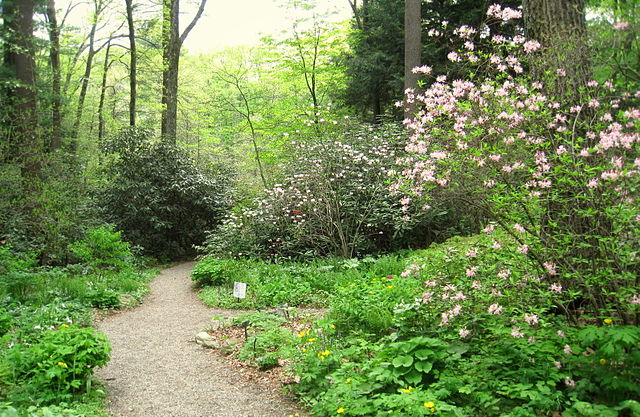
Native Plant Project
In 2009, representatives of Citizens for Lexington Conservation, in collaboration with members of the Lexington Tree Committee and Conservation Commission, formed a task group to develop a guide for using native plants for landscaping in Lexington. This project was taken on to support the Planning Board’s revision of zoning amendments for the Hartwell Avenue Commercial District, which included requirements for commercial property owners to use native plants in their landscaping and to remove, to the extent possible, invasive exotic plants that displace native plants and disrupt ecosystems.
Although this project was undertaken specifically for the Hartwell District, the goal was to develop a guide for landscaping on other commercial, municipal, and residential land in Lexington. In addition to inclusion as a zoning requirement for the Hartwell Avenue overlay district, both the Conservation Commission and the Tree Committee subsequently approved adoption of this plant list as a guide in their work on behalf of the Town.
The published guide includes the following information:
- A list of more than 250 plants native to Massachusetts, with a focus on species native to Middlesex County
- A list of the most common invasive exotic plant species in the Lexington area, most of which are included in a list of plants that Massachusetts has prohibited for sale, trade, purchase, or distribution
- A list of nurseries that sell a large variety of native plants. The guide can be downloaded or paper copies at no cost are available at Cary Library and the Conservation Department. The list of native species includes plants for diverse landscaping needs (groundcovers, trees, shrubs, herbaceous perennials, vines) and for different growing conditions. Because groundcovers are an important part of landscaping, the list has a wide selection of groundcovers that could replace aggressive groundcovers commonly in use such as English ivy, Japanese pachysandra, periwinkle, or bugleweed. In the realm of flowering shrubs, there are several native species of viburnums, dogwoods, and azaleas, plus rosebay, summersweet, pussy willow, mountain laurel, and more.

Invasive Species
Removing invasive plants is crucial to maintaining balanced ecosystems. There appears to be an epidemic of invasive plants in Lexington and surrounding areas (and nationally) that are crowding out native plants. Seeds from these invasive plant species can spread to rural areas and conservation land, including national forests and national parks. Some invasive plants have been used in landscaping by residents, commercial property owners, and town government without knowledge of the damage they do to ecosystems.


Native Insects
In his book Bringing Home Nature, Professor Douglas Tallamy, an entomologist at the University of Delaware, explains the importance of insect herbivores to the health of terrestrial ecosystems. Insects access the energy in plants and pass it on to other animals that eat insects. Insects are fussy about what they eat, however, and most insist on eating native plants and would die without them. Most terrestrial bird species rely on insects and other arthropods to feed their young. Some adult birds and many species of mammals include insects in their diet.
Typical lawns do not support native insects—and are especially problematic because so much land is covered by non-native grass in large suburban yards, golf courses and schoolyards, along highways, and in industrial parks. Adding strips of native plants around such areas, and around parking lots, would provide more food and shelter for the local fauna. We would expect to have butterfly and bird populations increase as well as other fauna that are less visible.
Tallamy notes in his book that ecologists have determined that a very small portion (3 to 5%) of the land area in the lower 48 states consists of undisturbed habitats and many of those are small, scattered ‘islands’. Such habitat fragmentation leads to extinction of plant and animal species. Tallamy believes that the decline of nature can be redressed by reintroducing native species of plants in our yards and public spaces, as described above.
